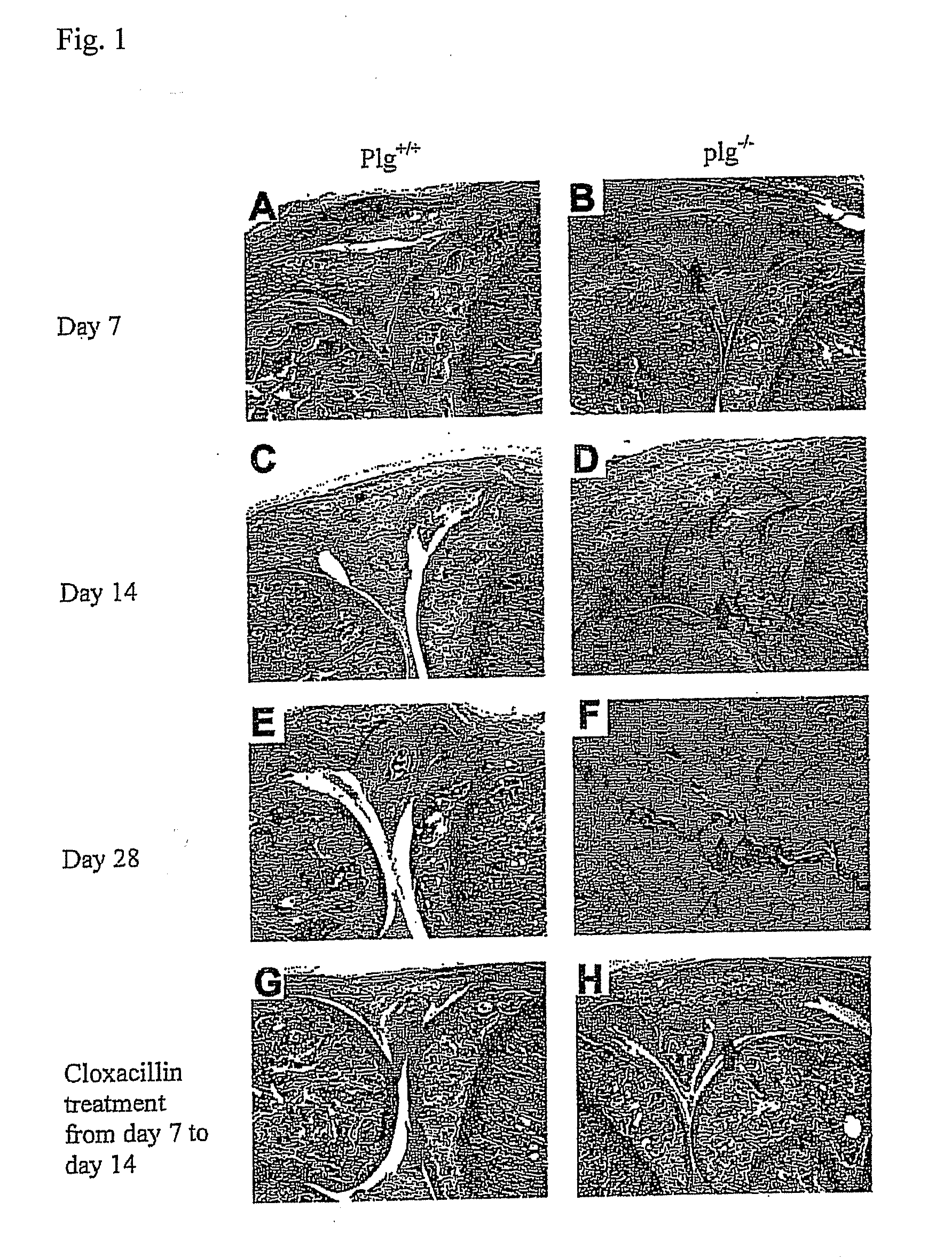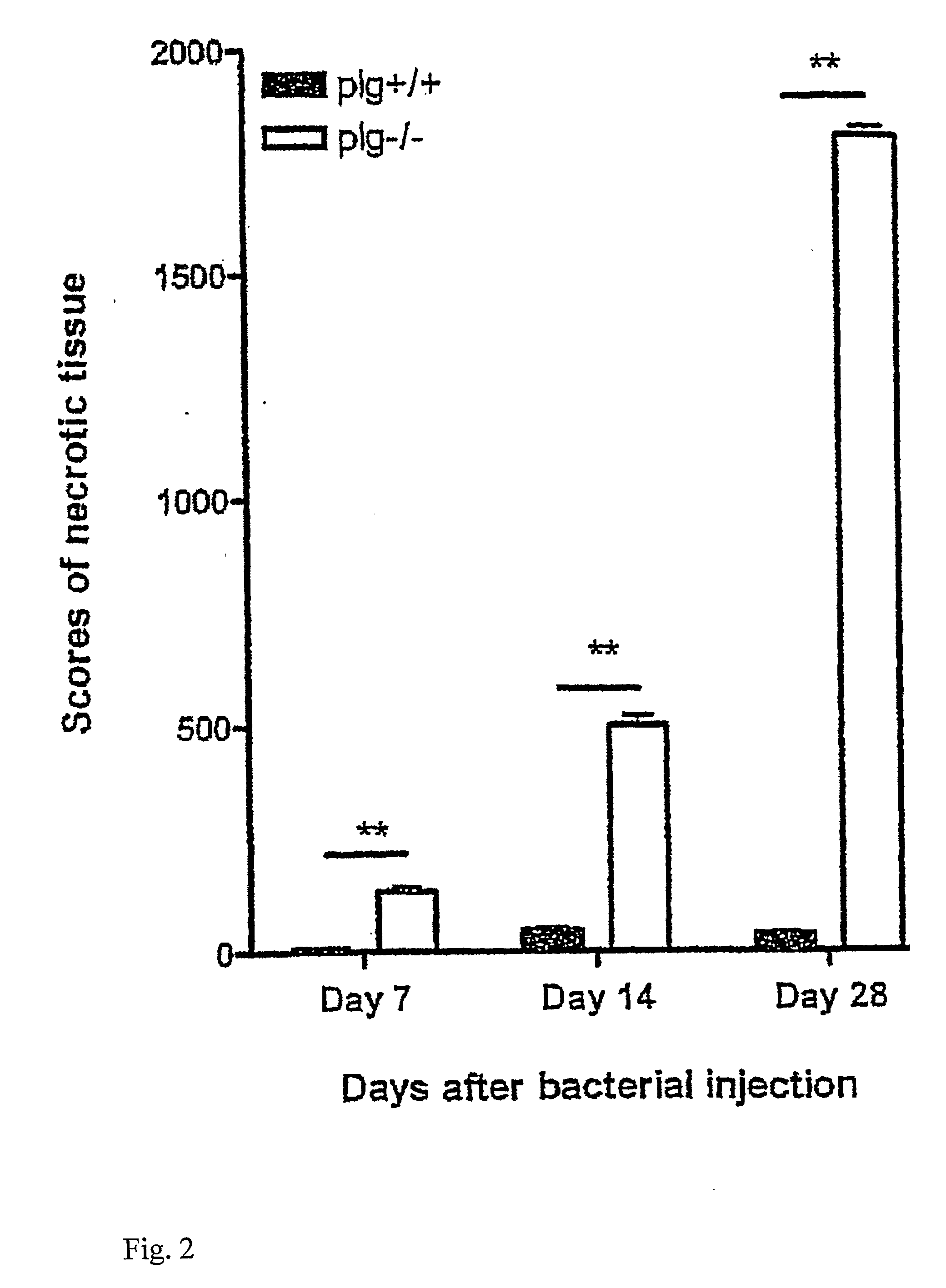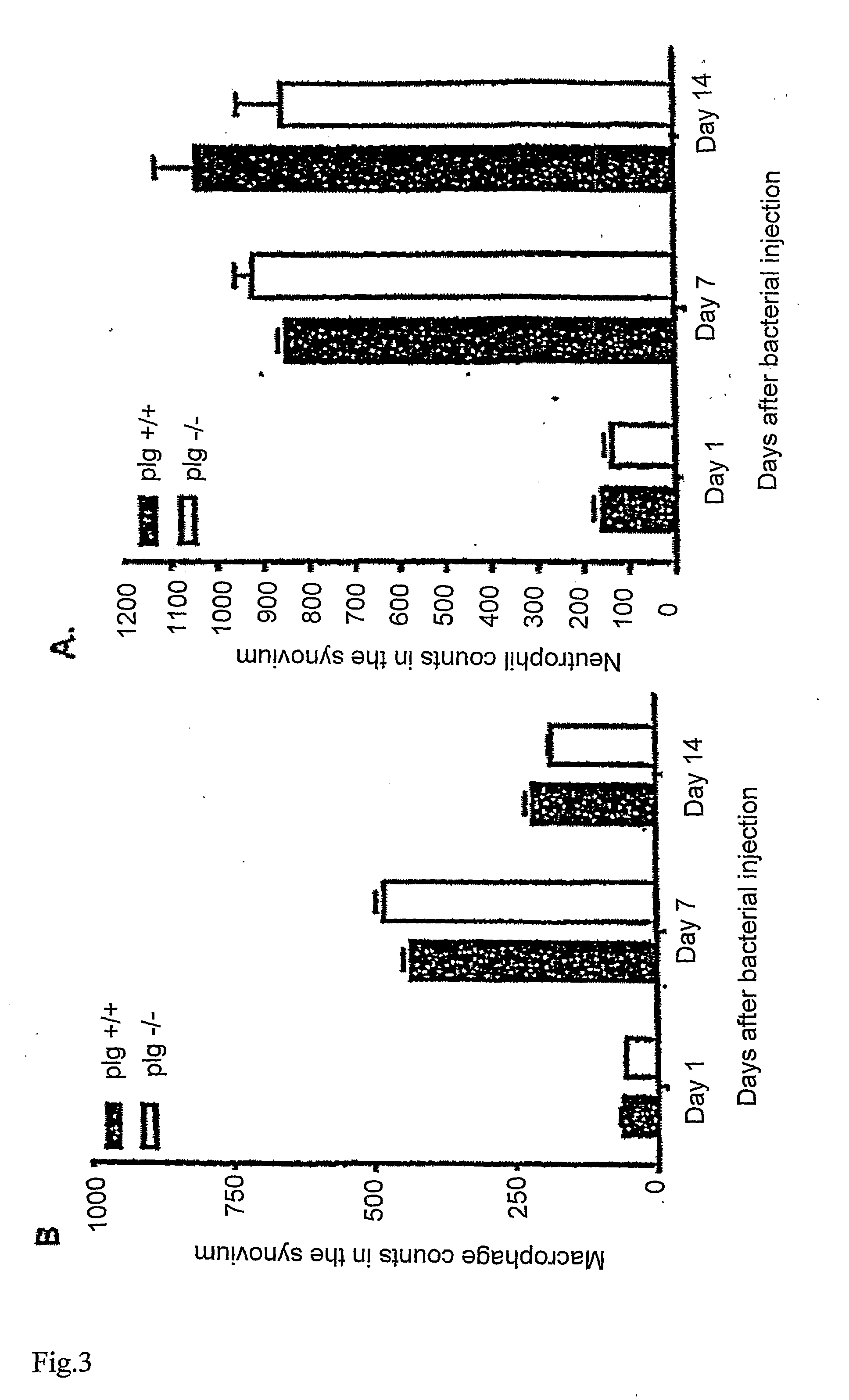Candidates against infection
a technology for otitis media and antibiotics, applied in the field of antibiotics, can solve the problems of necrosis, synovial inflammation, cartilage and bone destruction, and lack of evidence of antibiotics in curing otitis media, so as to reduce or prevent necrosis formation, enhance infection defense, and reduce the occurrence and the formation o
- Summary
- Abstract
- Description
- Claims
- Application Information
AI Technical Summary
Benefits of technology
Problems solved by technology
Method used
Image
Examples
example 1
Persistent Inflammation and Tissue Destruction in plg− / − Mice During S. aureus-Induced Bacterial Arthritis
[0143]This Example shows that plasminogen-deficient mice had persistent inflammation and tissue destruction compared to wild type control siblings. There are significantly more severe histopathological changes in plg− / − mice than in plg+ / + mice during S. aureus-induced bacterial arthritis.
Methods
[0144]Mice. Plasminogen-heterozygous (plg+ / −) mice of a mixed genetic background (129×C57BL / 6) were intercrossed to generate plg+ / +, plg+ / − and plg−− mice. Male plg+ / + and plg− / − mice at 8-12 weeks of age were used for the experiments (Ploplis V A, Carmeliet P, Vazirzadeh S, Van Vlaenderen I, Moons L, Plow E F, Collen D: Effects of disruption of the plasminogen gene on thrombosis, growth, and health in mice. Circulation 1995, 92:2585-2593).
[0145]Induction of bacterial arthritis. Bacterial strain used in the study was S. aureus Phillips (Courtesy from Dr. Hook, Department of rheumatology ...
example 2
Antibiotic Treatment Kills Bacteria and Reduces Inflammation, but does not Decrease Formation of Necrotic Tissue in plg− / − Mice
Methods
[0150]This experiment was performed in a similar manner as Example 1, except for administration of antibiotics to some of the animals.
[0151]Antibiotic treatment. The antibiotic cloxacillin (AstraZeneca, Södertälje, Sweden) was dissolved in sterile PBS and injected intraperitoneally into mice at a dosage of 0.5 mg / g body weight every 12-hour, starting at day 7 after bacterial injection. Mice were killed at day 14 after bacterial injection.
Results
[0152]The effects of antibiotic treatment on disease development in plg+ / + and plg− / − mice were also investigated. Mice were injected with bacteria at day 0 and treated with cloxacillin twice per day from day 7 to day 14 after bacterial injection. Recovery of bacteria from the infected joints at day 14 indicated that the bacteria were completely killed in plg− / − mice after cloxacillin treatment (data not shown)...
example 3
Plasminogen Deficiency Impairs Bacterial Clearance
Methods
[0153]This experiment was performed in a similar manner as Example 1, except for the bacterial counts.
[0154]Bacterial counts. At days 2, 3, 4, 5, 7, 14, and 28 post bacterial injection, the knee joints were taken and homogenized in 1 ml sterile PBS. After serial dilutions, the solutions of homogenates were spreaded on LB agar plates and incubated at 37° C. overnight. Viable bacterial colonies were then counted to evaluate the number of bacteria in each homogenate.
Results
[0155]We then investigated the bacterial growth in the knee joints of plg+ / + and plg− / − mice after bacterial arthritis induction. As shown in Table 1, in plg+ / + mice, the quantity of S. aureus in the infected knee joints declined immediately from day 2 after bacterial injection. At day 7, S. aureus was undetectable in 50% (7 / 14) of the plg+ / + mice. At day 14, S. aureus was undetectable in 80% (8 / 10) of the plg+ / + mice, and less than 1×103 CFU was found in the o...
PUM
| Property | Measurement | Unit |
|---|---|---|
| Mass | aaaaa | aaaaa |
| Mass | aaaaa | aaaaa |
| Mass | aaaaa | aaaaa |
Abstract
Description
Claims
Application Information
 Login to View More
Login to View More - R&D
- Intellectual Property
- Life Sciences
- Materials
- Tech Scout
- Unparalleled Data Quality
- Higher Quality Content
- 60% Fewer Hallucinations
Browse by: Latest US Patents, China's latest patents, Technical Efficacy Thesaurus, Application Domain, Technology Topic, Popular Technical Reports.
© 2025 PatSnap. All rights reserved.Legal|Privacy policy|Modern Slavery Act Transparency Statement|Sitemap|About US| Contact US: help@patsnap.com



